Invented by Baeckseung LEE, Alexander ASTRAKHAN, 2Seventy Bio Inc
Multiplex genome editing refers to the simultaneous editing of multiple genes within an organism’s genome. This technique has revolutionized the field of genetic engineering by enabling scientists to make complex modifications in a more efficient and precise manner. By using donor repair templates, researchers can introduce specific genetic sequences into an organism’s DNA, replacing or modifying existing genes.
One of the key drivers of the market for multiplex genome editing using donor repair templates is the increasing demand for genetically modified organisms (GMOs) in agriculture. With the global population expected to reach 9.7 billion by 2050, there is a pressing need to develop crops that are more resistant to pests, diseases, and environmental stresses. Multiplex genome editing allows scientists to introduce multiple desirable traits into crops simultaneously, resulting in improved yields, reduced pesticide use, and enhanced nutritional content.
The pharmaceutical industry is another major beneficiary of multiplex genome editing using donor repair templates. This technology has the potential to revolutionize drug discovery and development by enabling the creation of more accurate disease models. By editing the genes of animal models to mimic human diseases, scientists can better understand the underlying mechanisms and develop targeted therapies. Additionally, multiplex genome editing allows for the creation of cell lines with specific mutations, which can be used in drug screening and toxicity testing.
Biotechnology companies are also capitalizing on the market for multiplex genome editing using donor repair templates. This technology has opened up new avenues for the development of advanced therapies, such as gene and cell-based therapies. By precisely editing the genomes of cells, scientists can enhance their therapeutic potential and reduce the risk of adverse effects. Multiplex genome editing also holds promise for the treatment of genetic disorders, as it allows for the correction of disease-causing mutations.
The market for multiplex genome editing using donor repair templates is expected to witness significant growth in the coming years. Technological advancements, such as the development of more efficient editing tools and delivery systems, are driving the adoption of this technology across various industries. Additionally, the increasing availability of gene editing services and the growing number of research collaborations are further fueling market growth.
However, the market for multiplex genome editing using donor repair templates is not without challenges. Ethical concerns surrounding the use of genetically modified organisms and potential off-target effects of genome editing remain significant barriers to widespread adoption. Regulatory frameworks and public acceptance will play a crucial role in shaping the future of this market.
In conclusion, the market for multiplex genome editing using donor repair templates is poised for significant growth in the coming years. This technology has the potential to revolutionize various industries, including agriculture, pharmaceuticals, and biotechnology. As scientists continue to unlock the full potential of multiplex genome editing, we can expect to see groundbreaking advancements in the fields of medicine, food production, and environmental sustainability.
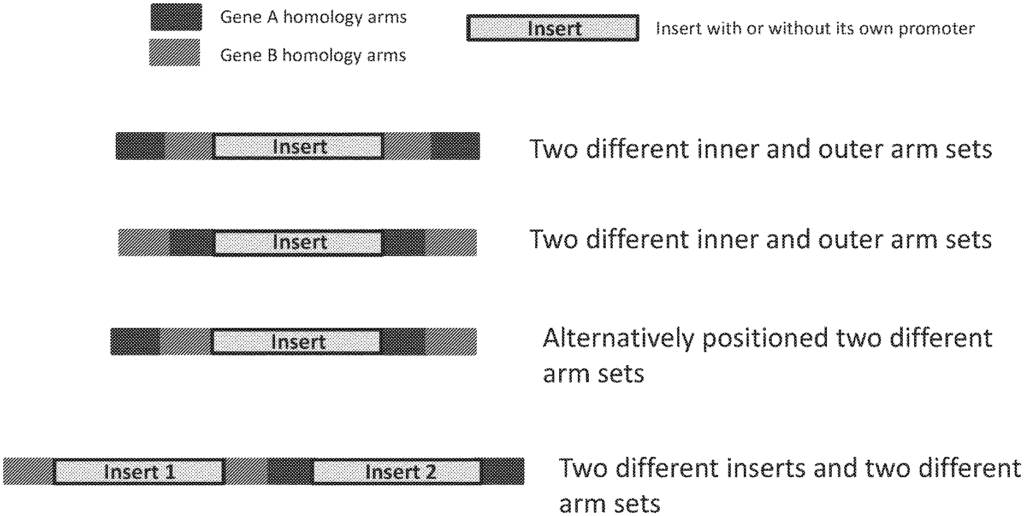
The 2Seventy Bio Inc invention works as follows
The present disclosure provides improved compositions and techniques for multiplex genome-editing. The disclosure also provides genome-edited cells for prevention, treatment or amelioration at least one of the symptoms of hemoglobinopathy or cancer or infectious diseases, autoimmune diseases, inflammatory diseases, or immunodeficiency.
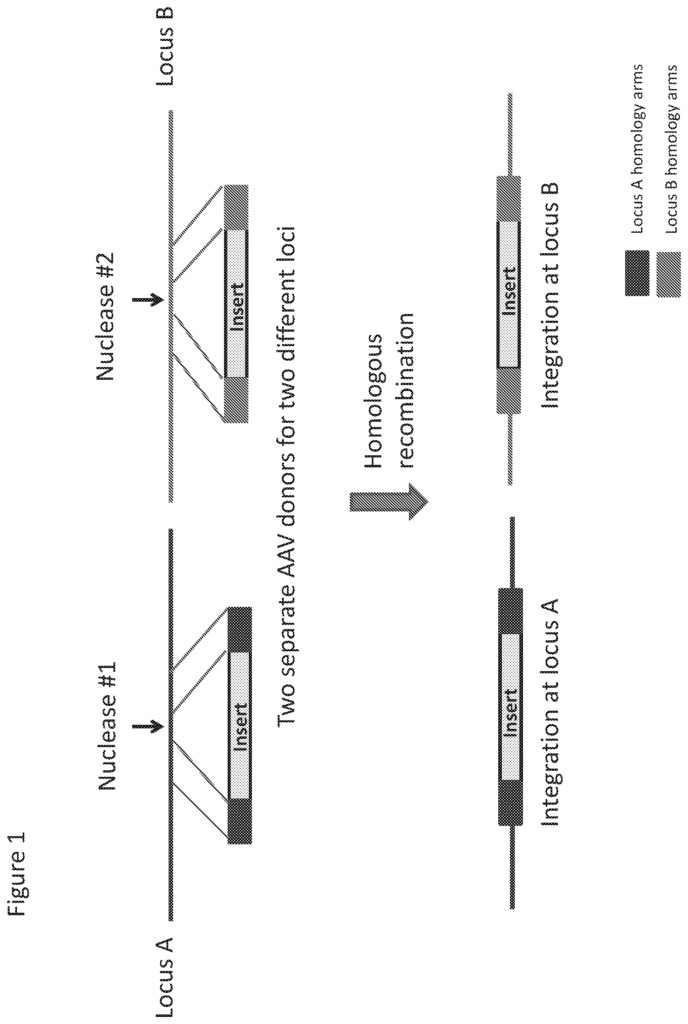
Background for Multiplex genome editing using donor repair templates
Technical Field
The present disclosure is about improved donor repair templates for genome editing. The disclosure is more specifically a single donor repair template designed to simultaneously target several sites in a DNA.
Description of Related Art
The ability to edit multiple genetic loci simultaneously and efficiently remains elusive. “It has been particularly difficult to achieve homology-directed repair using genome editing nucleases, such as CRISPR/Cas9 systems and MegaTAL nucleases, or DNA repair templates.
Adeno-associated viruses (AAV) DNA Repair Templates are often chosen for editing a single locus because they are low immunogenic and efficient in driving homology directed recombination. However, the existing designs are not suitable to simultaneously target multiple genetic loci. Multiple nucleases, and DNA donor repair template are the most common solution for targeting multiple genetic loci. “The solution is not effective and does not suit the manufacturing of complex genome-editing cell-based therapy for clinical use.
The present invention contemplates improved immune effector cells compositions as well as methods for manufacturing them using multiplex genome-editing compositions.
In various embodiments, it is provided a DNA donor template for repair comprising a first pair homology arms corresponding to a target site of a first type; a pair of second homology arms corresponding to a target site of a different type; and one or several transgenes.
In certain embodiments, the first set of homology arms includes a 5? “In particular embodiments, the first pair of homology arms comprises a 5? First target site, and a 3? A 3? “The first target site.
In particular embodiments, a second pair of homology arm comprises a DNA sequence 5? “In particular embodiments, the second pair of homology arms comprises a 5? The second target site is a 3? A 3? “The second target site.
In certain embodiments, in some cases the 5? In certain embodiments, the lengths of the 5? “Homology arms for the first and/or second target sites are selected independently from 100 bp up to 2500 bp.
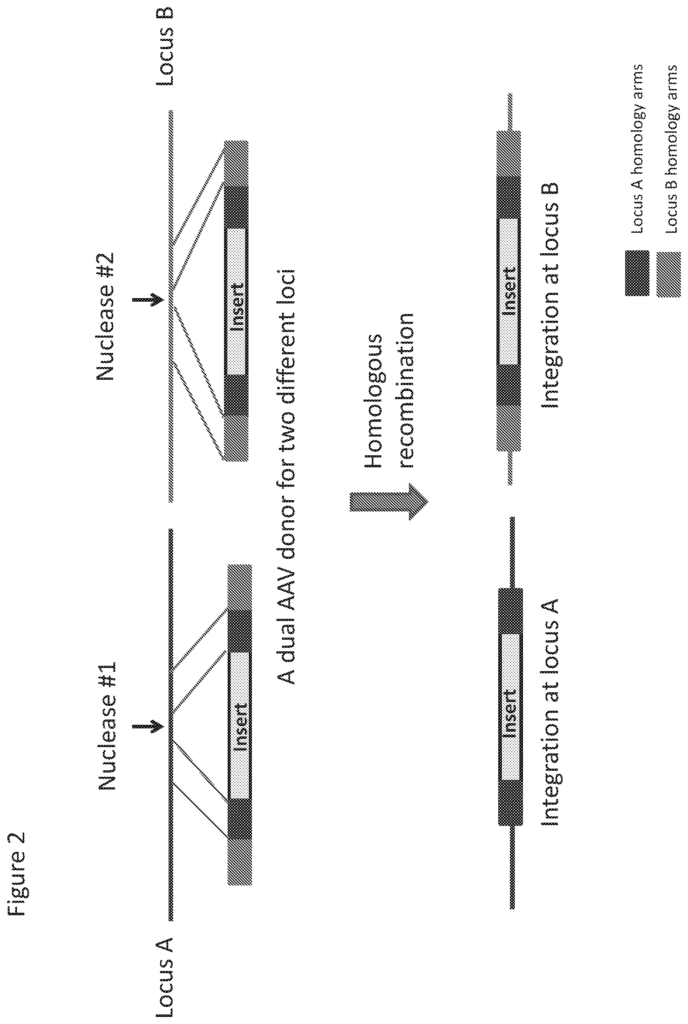
In some embodiments the lengths between the 3? In some embodiments, the length of the 5? “Homology arms for the first and/or second target sites are selected independently from 100 bp up to approximately 1500 bp.
In additional embodiments, in addition to the 5? In additional embodiments, the lengths of the 5? “Homology arms for the first and/or second target sites are selected independently from 100 bp up to 1000 bp.
In particular embodiments, the 5? The lengths of the 5? “Homology arms are selected independently from 100 bp up to 500 bp for the first and/or second target sites.
In further embodiments, in order to achieve the desired length of the 5? The lengths of the 5? “The homology arms at the first and/or second target sites are approximately 500 bp.
In some embodiments the lengths between the 3? The lengths of the 5? “The homology arms at the first and/or second target sites are approximately 300 bp.
In additional embodiments, in addition to the 5? The lengths of the 5? “The homology arms at the first and/or second target sites are approximately 100 bp.
The homology arm of the first target site is located 5? The 5? The 5? “Homology arm of the second target
The homology arm of the first target site is located 5? The homology arm 5? The homology arm of the first target site is located 5? “Homology arm of the second target
The homology arm of the first target site is located 3? The 3? The 3? “Homology arm of the second target
The 5? The 3? The homology arm is the first flank of a target site and a first transgene. The 5? The homology arm is the second target site, flanking a second transgene.
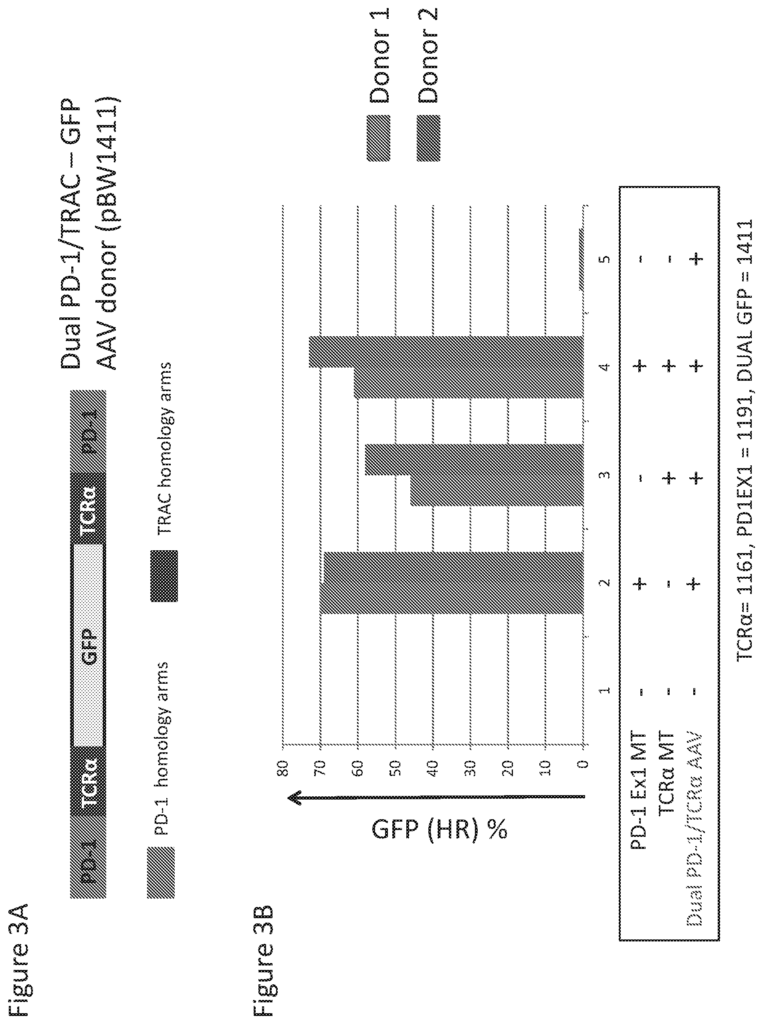
In further embodiments, in the target sites of the first and second genes are different.
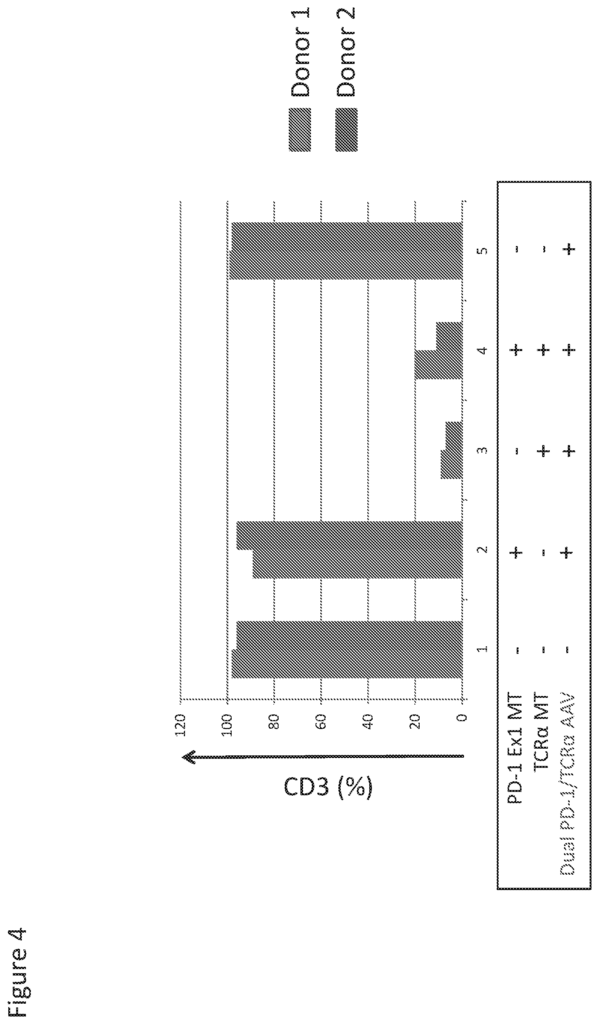
Click here to view the patent on Google Patents.
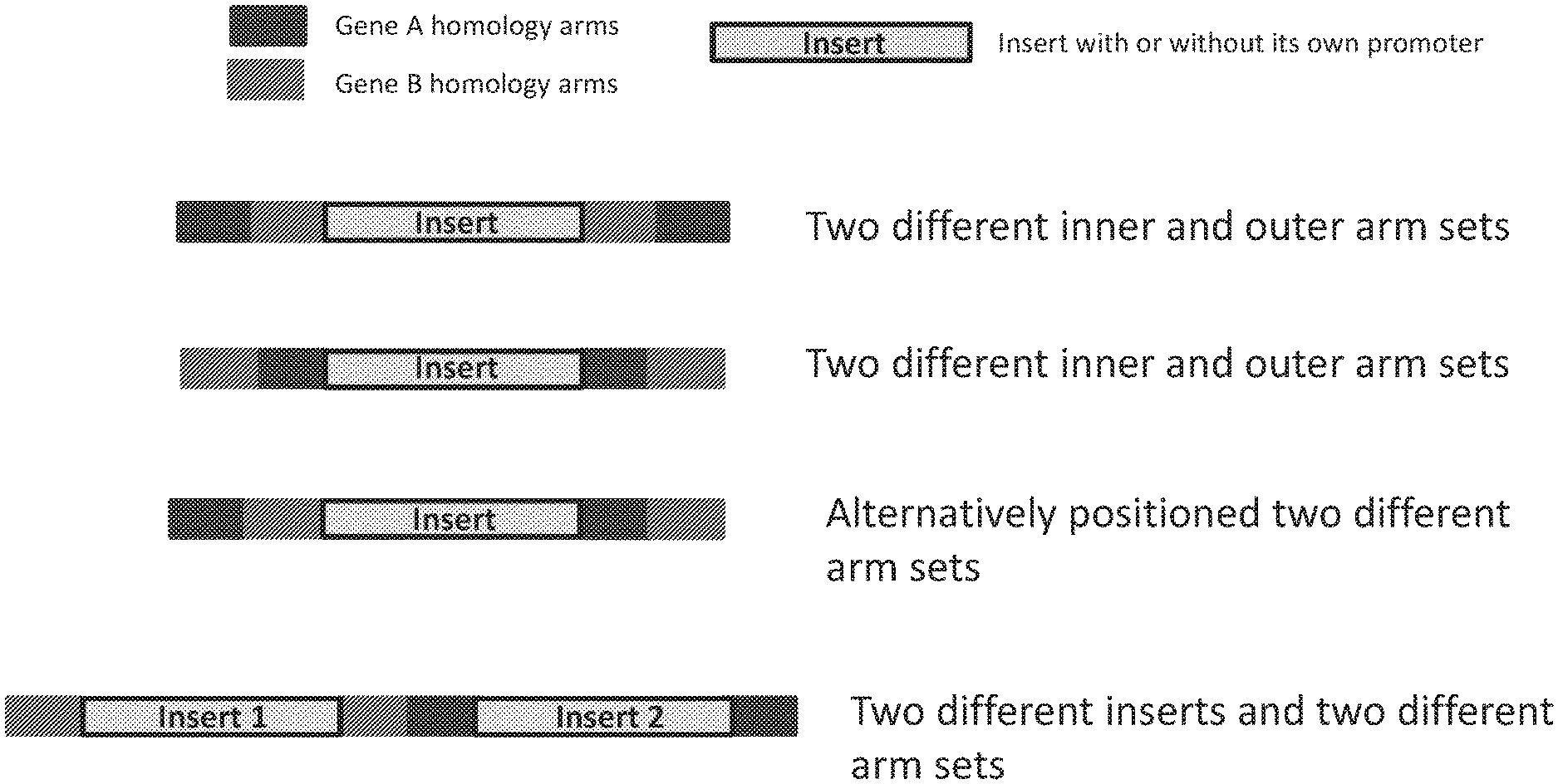
Leave a Reply